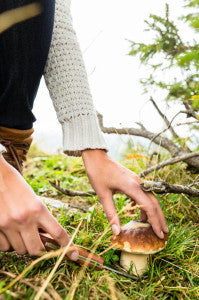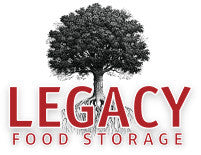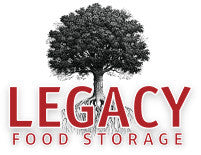
How to Find Edible Plants in the Wild
Picture this: You have found yourself in a survival-type situation. Luckily, you were well prepared with emergency food, water, and supplies when the survival situation first began, but it has been several months, and your food supply is running low. It’s time to turn to nature for some added sustenance. You walk outside and look around you. There is enough plant life outside to feed everyone, but how do you know which plants are edible and which ones are potentially poisonous?
This situation is not the stuff of science fiction novels. Every single person who has found him/herself in a survival situation thought at one point, “That will never happen to me.” But it did. And it could happen to any of us. To ready ourselves for anything life throws our way, we must acquire survival skills along the way. Learning how to find edible plants in the wilderness is a survival skill that will allow you to:
1. Have a nearly inexhaustible food supply.
2. Add more nutrition to your existing emergency food supply.
3. Add more nutrition to your everyday life. (Wild plants are often less tampered with genetically than their domestic counterparts.)
4. Get free food.
5. Make hiking a lot more interesting.
GETTING STARTED
So you’re ready to go out into the world and begin some wild foraging. Common sense should tell you that you can’t just walk outside and start picking. Many plants are poisonous and even deadly, and you must first educate yourself on what to look for and what to avoid. Get educated first, and start exploring your new skill once you have the knowledge you need.
There are several ways to become educated on edible plants. Many longtime foragers highly recommend taking a class when you are just beginning. There’s nothing quite like seeing plants up close to give you confidence in your plant identification skills. Many community education programs, universities and nature centers offer guided classes on food foraging. Check out your local organizations to see what’s offered near you.
In addition to taking a class, purchasing a reliable, heavily-pictured field guide is an indispensable step for a wild forager. Local libraries are usually well-stocked with field guides, and you can also find plenty online. Here are a few I have come across as recommendations several times:
-
Edible Wild Plants by John Kallas
-
The Forager’s Harvest: A Guide to Identifying, Harvesting, and Preparing Edible Wild Plants by Samuel Thayer
-
A Field Guide to Edible Wild Plants: Eastern and Central North America by Lee Allen Peterson and Roger Tory Peterson
-
Basic Essentials: Edible Wild Plants and Useful Herbs by Jim Meuninck
Once you begin looking for edible plants outside, keep a journal of your findings. In your journal, take detailed sketches of the plants you find to help you solidify your memory of those plants. People who keep journals of their edible findings are much more likely to identify them correctly because they have taken the time to become intimately knowledgeable of the plants’ parts. When you find an edible plant, experiment with different ways of preparing it to discover your favorite way to eat it. Eating the plants you find gives you ownership of them and means you will be more likely to recognize them in the future.
BONUS: FIVE COMMON PLANTS YOU DIDN’T KNOW WERE EDIBLE
Although we may not use them very often, edible plants are all around us. Take a look at just a few of the everyday plants you can eat:
1. Dandelions. Okay, maybe you’ve heard of dandelion wine or putting dandelion greens in a salad. But did you know you can also use dandelion roots to make a coffee-like drink, grind dandelion seeds into flour, and fry up and eat the yellow bloom? Dandelions present a world of possibilities to the wild forager. (Just make sure the ones you eat haven’t been sprayed with chemicals!)
2. Cattails. Cattails also offer a variety of ways to be eaten. Many foraging experts like to pick young cattail shoots and steam them like you would asparagus. Others like to take dried cattail pollen and use it as a flour. Still others boil up cattail roots and eat them with a little butter and salt. Who knew this prolific plant could be used in so many edible ways?
3. Acorns. Acorns aren’t known for their extreme tastiness, but if you’re in a pinch, they can add a bit of protein to your survival diet. Options for your acorn consumption are to boil them or soak them overnight to help eliminate some of their bitter flavor and eat their meat out of the shell, or blend the nut meat with a little water and use this mixture as a topping for vegetables or meats.
4. Purslane. Purslane is usually considered an annoying weed that grows rapidly with fairly shallow roots. But purslane is also apparently one of the best plant sources of Omega 3’s you can find. Steam it up like spinach for a boost of nutrients in your survival diet.
5. Stinging Nettle. Stinging nettle is vicious when it comes into contact with skin, and that’s why it’s such a surprise that stinging nettle is a reportedly delicious favorite of many food foragers. Much like purslane, stinging nettle can be steamed and eaten like spinach.
Get to know all of the edible plants that grow in your neck of the woods. Take some hikes, do some studying, and start to see the free food that waits all around you. If you find yourself in a survival situation, you’ll be glad you took the time to develop this unique skill.
FOR FURTHER EXPLORATION:
There are a variety of excellent wild foraging resources online. Following are a couple to get you started:
-
At WildCrafting, you can search by state to find known edible plants in your area.
-
WildUtahEdibles is an excellent site that documents edible wild plants in Utah.
The post How to Find Edible Plants in the Wild appeared first on Buy Emergency Food.
Tags
- All
- 25 year food
- 25 year shelf life food
- 72 hour kit
- Best food storage types
- Best long-term food storage
- Blizzard preparedness
- Budgeting
- canning
- Certified GMO-free Emergency foods
- Certified GMO-free foods
- Coffee
- Comparison of emergency food methods
- Composting tips
- Dangers of genetically modified foods
- dehydrated food
- Edible Wild Plants
- emergcy preparedness
- Emergency Cooking
- Emergency Food
- Emergency food Christmas gifts
- emergency food storage
- Emergency Food Supply
- Emergency food supply recommendations
- Emergency Planning
- Emergency Preparedness
- Emergency preparedness advice
- emergency preparednesss
- Emergency Supplies
- Emergency supplies checklist
- Emergency Survival
- emergency survival gear
- Emergency survival kit checklist
- Emergency Survival skills
- exercise
- Family emergency preparedness
- Family emergency preparedness plan
- Family Preparedness
- Food Storage
- Food storage 25 year shelf life
- Food storage amounts
- Food storage Christmas
- Food storage containers long term
- Food Storage Secrets
- Food storage serving size
- Food storage types compared
- freeze dried food
- Freeze dried food storage
- freeze dried meats
- Freeze-dried emergency food storage
- Fruit Trees
- Gardening
- Getting Started
- Gluten-free food Storage
- Gourmet emergency food
- Healthy food storage
- How much emergency food to store
- Improved emergency preparedness
- Jared Markin
- Jared Matkin
- Legacy Premium
- Lessons learned from Hurricane Sandy
- Lessons learned from natural disasters
- long-term food storage
- Long-term Food Storage Guidelines
- Long-term Food Storage tips
- Long-term water storage
- Mental Emergency Preparedness
- Mental toughness
- Money-saving tips
- Natural disaster planning
- Natural Disasters
- Perfect Christmas gifts
- Pet Emergency preparedness checklist
- Pet Emergency preparedness kit
- Pet Emergency Survival tips
- Pets and Emergency Preparedness
- Plant Foraging
- portable solar panels
- portable solar power
- portable water filters
- protein drinks
- Risk of genetic modification
- Seed saving and storage
- Seed saving guide
- Self-reliance
- Self-reliant practices
- Shelf Life
- Solar Cooking
- Solar Ovens
- Special Dietary needs
- Stranded in a car in a blizzard
- Survival food
- Survival Gear
- survival kit
- Survival kits
- Survival Ovens
- Survival Skills
- survivalist gear
- suvival kit
- Tree Pruning tips
- Tree Trimming basics
- unique ideas
- water bottle with filter
- water filter
- water filter straw
- water filters
- Water Filtration
- water pitcher with filter
- water pitchers with filters
- Water purification
- Wild Food Foraging
- Winter composting
- Winter driving
- Winter preparedness tips
- Winter storm preparedness tips
- Winter Survival








